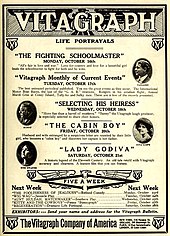
Lady Godiva, in Old English Godgifu, was a late Anglo-Saxon noblewoman who is relatively well documented as the wife of Leofric, Earl of Mercia, and a patron of various churches and monasteries.
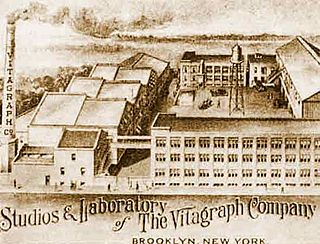
Vitagraph Studios, also known as the Vitagraph Company of America, was a United States motion picture studio. It was founded by J. Stuart Blackton and Albert E. Smith in 1897 in Brooklyn, New York, as the American Vitagraph Company. By 1907, it was the most prolific American film production company, producing many famous silent films. It was bought by Warner Bros. in 1925.
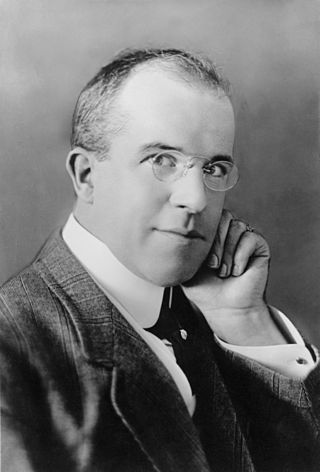
James Stuart Blackton was a British-American film producer and director of the silent era. One of the pioneers of motion pictures, he founded Vitagraph Studios in 1897. He was one of the first filmmakers to use the techniques of stop-motion and drawn animation, is considered a father of American animation, and was the first to bring many classic plays and books to the screen. Blackton was also the commodore of the Motorboat Club of America and the Atlantic Yacht Club.

Leofric was an Earl of Mercia. He founded monasteries at Coventry and Much Wenlock and was a very powerful earl under King Cnut and his successors. Leofric was the husband of Lady Godiva.
Godiva or Lady Godiva was an Anglo-Saxon noblewoman who, according to legend, rode naked through the streets of Coventry, in England, in order to gain a remission of the oppressive taxation imposed by her husband on his tenants.
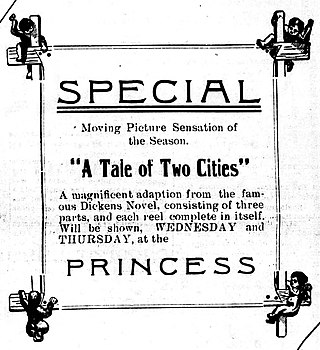
A Tale of Two Cities is a 1911 silent film produced by Vitagraph Studios, loosely based on the 1859 novel by Charles Dickens.
Events from the 1040s in England.

Julia Swayne Gordon was an American actress who appeared in at least 228 films between 1908 and 1933.
The Godiva Procession is an annual procession in the city of Coventry, England, which re-enacts the story of Lady Godiva. Godiva Processions have been held in Coventry since the 17th century.

Lady Godiva of Coventry is a 1955 American Technicolor historical drama film, directed by Arthur Lubin. It starred Maureen O'Hara in the title role. Alec Harford, the English actor who portrayed Tom the Tailor, died eight months before the film's release.

Lady Godiva is a 2008 British romantic comedy film written and directed by Vicky Jewson. The film, starring Phoebe Thomas, Matthew Chambers, and Natalie Walter, was shot in 2006 but went unreleased for two years. Based on the historic tale of Lady Godiva, it was set in modern-day Oxford.

The Automobile Thieves is an American crime-drama silent film directed by J. Stuart Blackton. The picture stars Blackton and Florence Lawrence. It was released on November 10, 1906 by The American Vitagraph Company; a print of the feature is preserved in the UCLA Film and Television Archive.
Bride of the Storm is a 1926 American silent adventure film directed by J. Stuart Blackton at Warner Bros. and starring Tyrone Power, Sr. and Dolores Costello. Sheldon Lewis plays Tyrone Power's son in this picture even though, in real life, Lewis was a year older than Power.
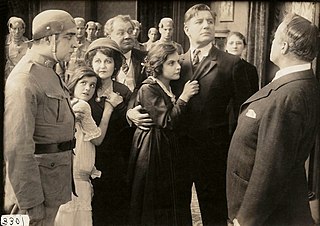
The Battle Cry of Peace is a 1915 American silent war film directed by Wilfrid North and J. Stuart Blackton, one of the founders of Vitagraph Company of America who also wrote the scenario. The film is based on the book Defenseless America, by Hudson Maxim, and was distributed by V-L-S-E, Incorporated. The film stars Charles Richman, L. Rogers Lytton, and James W. Morrison.

Albert Edward Smith was an English stage magician, film director and producer, and a naturalized American. He founded Vitagraph Studios with his business partner James Stuart Blackton in 1897.

Between Friends is a 1924 American silent melodrama film based on the eponymous 1914 novel by Robert W. Chambers. The film was directed by J. Stuart Blackton and produced by Albert E. Smith. It stars Lou Tellegen, Anna Q. Nilsson, and Norman Kerry. The feature was distributed by Vitagraph Studios, which was founded by Blackton and Smith in 1897 in Brooklyn, New York. The film is lost.

The Redeeming Sin is a 1925 American silent drama film directed by J. Stuart Blackton and starring Alla Nazimova. It was produced and distributed by the Vitagraph Company of America. The story was remade in 1929 by Warner Bros. as The Redeeming Sin starring Dolores Costello.

Lady Godiva is a 1921 German silent historical film directed by Hubert Moest and starring Hedda Vernon and Eduard von Winterstein.
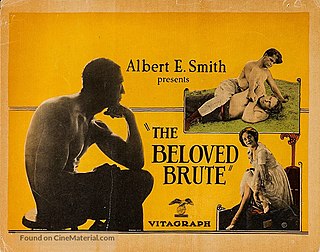
The Beloved Brute is a 1924 American silent Western film directed by J. Stuart Blackton and starring Marguerite De La Motte, Victor McLaglen, and William Russell. It is based on the 1923 novel The Beloved Brute by Kenneth Perkins. This was English-born McLaglen's first American film.

Self Sacrifice, better known as the Lady Godiva statue is an equestrian statue of Lady Godiva in Broadgate, Coventry. The statue is bronze, on a plinth of Portland stone.


